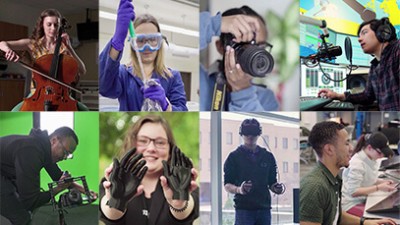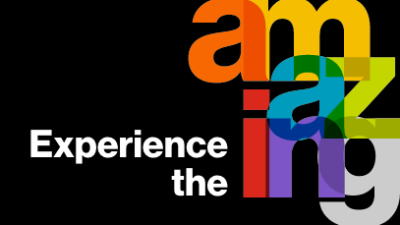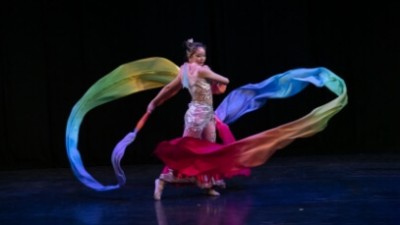Carmon, Nimrod, et al. "Advancing Topographic Correction in Hyperspectral Imaging: The Shape from Spectra Method." Proceedings of the 13th EARSeL Workshop on Imaging Spectroscopy, 16-18, April 2024. Ed. European Association of Remote Sensing Laboratories. Valencia, Spain: European Association of Remote Sensing Laboratories, 2024. Web.
Nur, Nayma Binte and Charles M. Bachmann. "Techniques for Improved Soil Moisture Estimation Using Hyperspectral Data." Proceedings of the AGU Fall Meeting 2024. Ed. AGU. Washington, DC: AGU, 2024. Web.
Empen, Ian, et al. "Estimating Created Wetland Soil Organic Matter Using UAS Hyperspectral Imagery." Proceedings of the AGU Fall Meeting 2024. Ed. AGU. Washington, DC: AGU, 2024. Web.
Nur, Nayma Binte, et al. "Enhancing Wetland Soil Property Estimates with UAS Hyperspectral Imaging in Preparation for the NASA SBG Mission." Proceedings of the AGU Fall Meeting 2024. Ed. AGU. Washington, DC: AGU, 2024. Web.
Bachmann, Charles M. and Nayma Binte Nur. "Intercomparison of Anisotropic Models for Surface Scattering In Hyperspectral Remote Sensing." Proceedings of the AGU Fall Meeting 2024. Ed. AGU. Washington, DC: AGU, 2024. Web.
Lockwood, Ronald, et al. "Aquatic ecosystems science using an imaging spectrometer." Proceedings of the SPIE Optical Engineering + Applications, Proc. SPIE 12688, Imaging Spectrometry XXVI: Applications, Sensors, and Processing, 126880C. Ed. SPIE. San Diego, CA: SPIE, 2023. Web.
Smith, David D., et al. "Optical performance of reflectivity control devices for solar sail applications." Proceedings of the SPIE Optical Engineering + Applications XIII. Ed. PC1266405 (28 September 2023), https://doi.org/10.1117/12.2676775. San Diego, CA: SPIE, 2023. Web.
Nur, Nayma Binte, et al. "Retrieval of Soil Organic Carbon from Hyperspectral Imagery." Proceedings of the AGU Fall Meeting 2022. Ed. AGU. Chicago, IL: AGU, 2022. Web.
Nu, Nayma Binte, et al. "Mapping Soil Organic Carbon Using UAS Hyperspectral Imagery." Proceedings of the IEEE International Geoscience and Remote Sensing Symposium (IGARSS) 2023. Ed. IEEE. Pasadena, CA: IEEE, 2023. Web.
Smeaton, Corrie, et al. "Imaging Spectrometer Implementation on a Small Satellite Platform for Aquatic Ecosystems Science." Proceedings of the Proceedings of the 37th Annual AIAA/USU Conference on Small Satellites. Ed. AIAA/USU. Logan, UT: AIAA/USU, 2023. Web.
Mao, Yiwei, et al. "Measuring Diffuse Sky Radiance Using Imaging Spectroscopy." Proceedings of the AGU Fall Meeting 2023. Ed. AGU. San Francisco, CA: AGU, 2023. Web.
Nur, Nayma Binte, Charles M. Bachmann, and Timothy D. Bauch. "A Comparative Study Evaluating and Enhancing Soil Moisture Retrieval Models for Hyperspectral Missions." Proceedings of the AGU Fall Meeting 2023. Ed. AGU. San Francisco, CA: AGU, 2023. Web.
Nur, Nayma Binte, et al. "Utilizing UAS Hyperspectral Imagery for Precise Soil Organic Matter, Carbon, and Nitrogen Assessment." Proceedings of the AGU Fall Meeting 2023. Ed. AGU. San Francisco, CA: AGU, 2023. Web.
Bachmann, Charles M., et al. "Improving the Characterization of Aquatic Ecosystems with an Enhanced Imaging Spectrometer." Proceedings of the AGU Fall Meeting 2023. Ed. AGU. San Francisco, CA: AGU, 2023. Web.
Lee, Chris H., et al. "Goniometric and Polarized Imaging Spectroscopic Lab Measurements of Spacecraft Materials." Proceedings of the AMOS Technical Conference, September 27-30, 2022, Maui, HI. Ed. AMOSTech. Mauii, HI: n.p., Web.
Bachmann, Charles M., et al. "Retrieval of Sediment Geophysical Properties from Hyperspectral UAS Imagery in Preparation for the NASA SBG Mission." Proceedings of the AGU Fall Meeting. Ed. American Geophysical Union. New Orleans, LA: https://agu.confex.com/agu/fm21/meetingapp.cgi/Paper/947789, 2021. Web.
Bachmann, Charles M. and Reid Nichols. "Hyperspectral Imager for Updated Littoral Situational Awareness (HULA)." Proceedings of the NOAA Emerging Technologies Workshop. Ed. NOAA. College Park, MD: NOAA Emerging Technologies Workshop 2019 Report, 2019. Web.
Tyler, Anna C., et al. "Addressing High Spatial Heterogeneity in Salt Marsh Primary Production Using High Resolution Remote Sensing." Proceedings of the AGU Fall Meeting. Ed. AGU. Washington, DC: AGU, 2018. Web.
Bachmann, Charles M. "A Next Generation Field-portable Goniometer System." Proceedings of the SPIE Defense and Security 2016. Baltimore, Maryland: SPIE, 2015. Print.
Bachmann, Charles M. "How Many Spectral Bands are Necessary to Describe the Directional Reflectance of Beach Sands?" Proceedings of the SPIE Defense and Security 2016. Baltimore, Maryland: SPIE, 2015. Print.
Bachmann, Charles M. "Retrieval of Sediment Fill Factor from Hyperspectral BRDF Measurements of Coastal Sediments." Proceedings of the SPIE Defense and Security 2016. Baltimore, Maryland: SPIE, 2015. Print.
Bachmann, Charles M. "Schrodinger Eigenmaps for Semi-supervised Manifold Alignment of Hyperspectral Imagery." Proceedings of the SPIE Defense and Security 2016. Baltimore, Maryland: SPIE, 2015. Print.
Bachmann, Charles M. "Improved Modeling of Multiple Scattering in Hyperspectral BRDF of Coastal Sediments Observed Using the Goniometer of the Rochester Institute of Technology (GRIT)." Proceedings of the Imaging Spectrometry XX. San Diego, California: SPIE, 2015. Print.
Bachmann, Charles M. "Influence of Density on Hyperspectral BRDF Signatures." Proceedings of the SPIE Defense and Security 2015. Baltimore, Maryland: SPIE, 2015. Print.
Bachmann, Charles M. "Modeling and Mitigating Noise in Graph and Manifold Representations of Hyperspectral Imagery." Proceedings of the SPIE Defense and Security 2015. Baltimore, Maryland: SPIE, 2015. Print.
Bachmann, Charles M. "Modeling and Mitigating Noise in Graph and Manifold Representations of Hyperspectral Imagery." Proceedings of the SPIE Defense and Security 2015. Baltimore, Maryland: SPIE, 2014. Print.
Bachmann, Charles M. "Influence of Density on Hyperspectral BRDF Signatures." Proceedings of the SPIE Defense and Security 2015. Baltimore, Maryland: SPIE, 2014. Print.
Bachmann, Charles M. "Retrieval of Sand Density from Hyperspectral BRDF." Proceedings of the SPIE Defense and Security 2014. Baltimore, Maryland: SPIE, 2014. Print.










